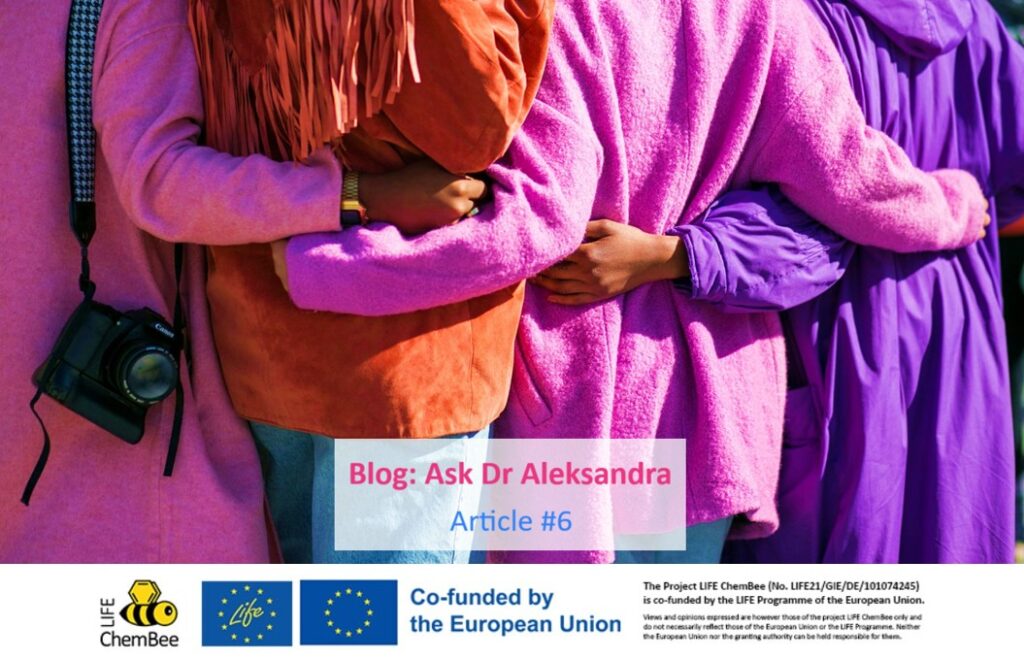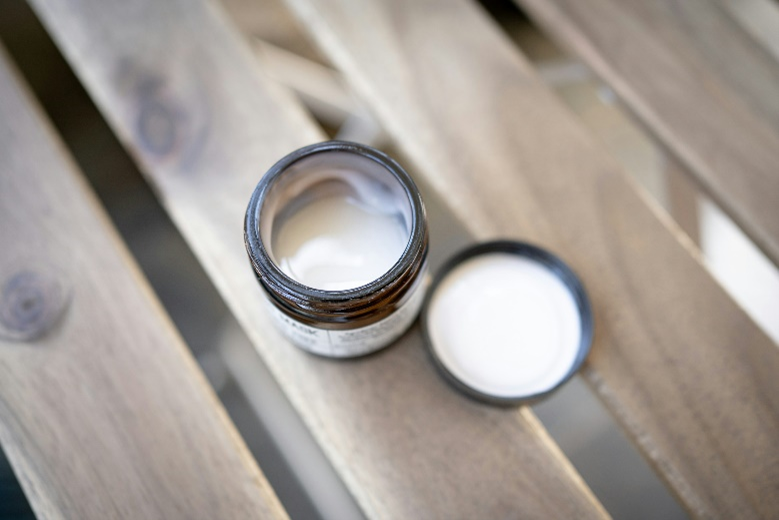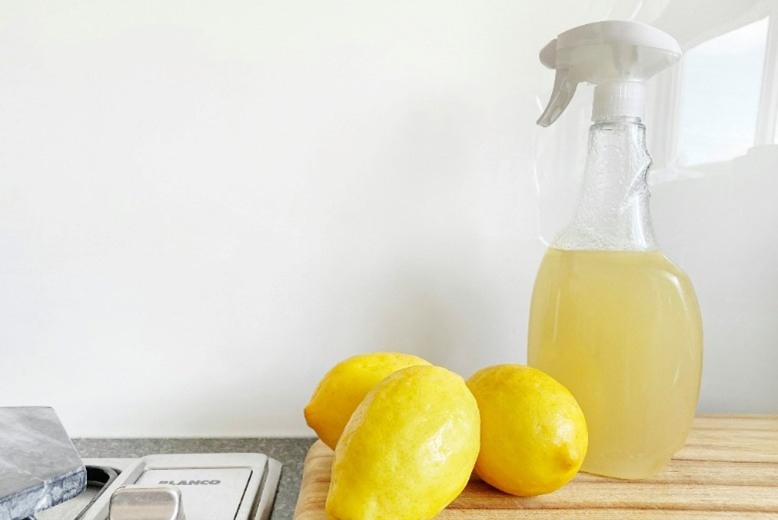
We all know that screening programmes are essential for early diagnosis and effective treatment, but prevention also means identifying and avoiding certain risk factors. Our aim is to show you how simple lifestyle changes can help reduce your risk of hormone-related cancers, including breast cancer. So if you’re wondering what you can do to reduce your risk, we’ve got you covered! Grab a cup of your favourite tea and read on to learn more about this important topic.

Let’s start with the facts!
According to the World Health Organisation (WHO), 2.3 million women will be diagnosed with breast cancer in 2022 alone, making it the most common cancer in 157 out of 185 countries. The problem is real, so what can we do? First, let’s look at the risk factors, which include
- age
- obesity (body mass index, BMI ≥ 30)
- high alcohol consumption
- tobacco use
- poor food quality
- high socioeconomic status
- family history of breast cancer
- history of radiation exposure
As we’ve mentioned, breast cancer is hormone-dependent, with estrogens playing a key role. Don’t get us wrong, estrogens are not the ‘bad guys’. In fact, they’re essential for breast development and reproductive health. But, as with most things, too much can be harmful. Prolonged exposure to estrogen is a significant risk factor for breast cancer. Certain reproductive factors – such as early menstruation, late menopause, older age at first pregnancy or hormone replacement therapy – can increase this exposure.
This brings us to a risk factor that may be less obvious, but is a combination of both lifestyle and hormonal factors: exposure to chemicals known as endocrine disruptors (EDs).

What are endocrine disruptors?
Think of EDs as hormonal imposters. These chemicals mimic natural hormones, and your body can’t always tell the difference. As a result, it reacts to EDs in the same way as it does to natural or synthetic hormones (drugs), which can disrupt hormone balance and cause problems. Want to know more about hormones and ED? Click here.
Some chemicals, known as estrogen mimics or estrogen-like endocrine disruptors, can mimic the effects of natural estrogen in the body. These include substances such as BPA, nonylphenol, phthalates and polychlorinated biphenyls. While these names may sound like something out of a science lab, they’re actually found in everyday items much closer to home. Although some scientists classify them as ‘weak’ environmental estrogens, research shows that even low-dose, long-term exposure – especially to chemicals like BPA – can increase the risk of hormone disruption, breast cancer and other breast-related health problems. Let’s take a closer look at where these chemicals are lurking and how we can reduce our exposure to lower our risk of estrogen-dependent diseases, including breast cancer.
Timing Matters – vulnerable life stages
Women are generally more vulnerable to the effects of ED exposure throughout their lives, but certain stages are particularly critical.
Pregnancy
Research shows that perinatal (before and after birth) exposure to chemicals may be more important for breast cancer risk than adult exposure. EDs can pass from a woman’s body to her foetus through the placenta, and they’ve been found in both amniotic fluid and umbilical cord blood. It is therefore important for pregnant women to avoid EDs to protect their unborn babies.

Infancy
After birth, the WHO recommends breastfeeding for at least the first six months of life. Unfortunately, EDs have also been found in breast milk, which means they can be passed from mother to baby. If a woman chooses to use formula, it is important to choose a glass or stainless steel bottle with a medical-grade silicone nipple.
Whatever the situation, choosing safer products on a daily basis and limiting exposure to ED can benefit both mother and baby. More on protecting the little ones is coming soon, so stay tuned!

Puberty
And as a baby girl becomes a teenager and enters puberty, the developing mammary glands are particularly sensitive to hormone disruptors and carcinogens. Minimising exposure to EDs during this critical time may help reduce the risk of breast cancer later in life.

Protecting the next generation and your own health
If you have – or are planning to have – children, this is a compelling reason to start making small, healthy changes today. But what if you’re past that age or don’t plan to have children? You can still reduce your own risk, and we strongly recommend that you do. Trust us, it is never too late to adopt new habits that can make you stronger, healthier and more resistant to disease.
Common sources of estrogen-like endocrine disruptors (and how to minimise your exposure)
When it comes to reducing your risk of hormone-related cancers such as breast cancer, minimising your exposure to endocrine disruptors is an important step. As you already know, these chemicals can disrupt your hormone balance by mimicking estrogen, and they are more common in everyday life than you might think. Here are some of the most common sources of these chemicals and simple steps you can take to reduce your exposure.
Food packaging materials
Many of the foods we buy are packaged in materials that contain estrogen-like EDs, especially cans, polystyrene, and plastic containers. Here are some ways you can limit your exposure to these chemicals:
- If possible, buy loose or choose products packed in glass or paper – these materials are generally safer alternatives.
- Never heat food in its packaging – heating plastic can release harmful chemicals, so transfer food to a glass or ceramic container before reheating.
- Reduce takeout consumption – takeaway food often comes in plastic or polystyrene packaging. If possible, bring your own reusable containers when ordering out.

Cosmetics and personal care products
Many skincare, make-up and body care products contain EDs, especially those packaged in plastic. To reduce exposure:
- Choose products in glass or cardboard packaging – these materials are safer and more eco-friendly.
- Use cosmetics sparingly – try to limit the amount of product you use and give your skin a break by taking make-up-free days whenever possible.
- Be cautious with fragrances – perfumes often contain phthalates, a type of ED. Check your products and consider switching to options with fewer artificial fragrances.

Cleaning products
Cleaning agents can also be a hidden source of harmful chemicals. You can make healthier choices, here is how:
- Use just enough – as with cosmetics, only use as much as you need.
- Protect your skin and airways – wear rubber gloves when cleaning and make sure you ventilate rooms by opening windows.
- Choose natural alternatives – look for eco-labelled products or make your own cleaners with simple ingredients like baking soda, vinegar, citric acid, or even sugar cubes for gentle scrubbing.

Spread the word obout prevention!
Reducing your exposure to endocrine disruptors is important, but it is only one piece of the puzzle in preventing breast cancer. Combine these efforts with a healthy lifestyle – eating a balanced diet, staying physically active and doing regular breast self-exams. It is also important to schedule annual mammograms or ultrasounds.
Most importantly, share this information with your loved ones. Encourage them to check their health regularly – prevention is always better when it’s shared!

Image credits / source: unsplash.com and pixabay.com
If you have any questions or need more information, please write to Dr Aleksandra: AskDrAleksandra@detoxed.eu or contact us directly via Instagram @AskDrAleksandra
DetoxED library (for those who want to know and read more):
Szybiak A (Olsson A), Rutkowska A, Wilczewska K, Wasik A, Namieśnik J, Rachoń D. Daily diet containing canned products significantly increases serum concentrations of endocrine disruptor bisphenol A in young women. Pol. Arch. Intern. Med. 2017; 127 (4): 278-280. https://doi.org/10.20452/pamw.4005
Konieczna A. (Olsson A), Rutkowska AZ, Szczepańska N, Namieśnik J, Rachoń D. Canned food as a source of bisphenol a (BPA) exposure – estimation of consumption among young women from Gdańsk, Poland. Med. Środ. 2018; 21 (1): 31-34. https://doi.org/10.19243/2018104
Rutkowska AZ, Szybiak A (Olsson A), Serkies K, Rachon D. Endocrine disrupting chemicals as potential risk factor for estrogen-dependent cancers. Pol Arch Med Wewn. 2016; 126(7-8):562-70. https://doi.org/10.20452/pamw.3481
World Health Organization 2024, Breast Cancer, https://www.who.int/news-room/fact-sheets/detail/breast-cancer
Calaf GM, Ponce-Cusi R, Aguayo F, Muñoz JP, Bleak TC. Endocrine disruptors from the environment affecting breast cancer. Oncol Lett. 2020; 20(1):19-32. https://doi.org/10.3892/ol.2020.11566
Wan MLY, Co VA, El-Nezami H. Endocrine disrupting chemicals and breast cancer: a systematic review of epidemiological studies. Crit Rev Food Sci Nutr. 2022; 62(24):6549-6576. https://doi.org/10.1080/10408398.2021.1903382

